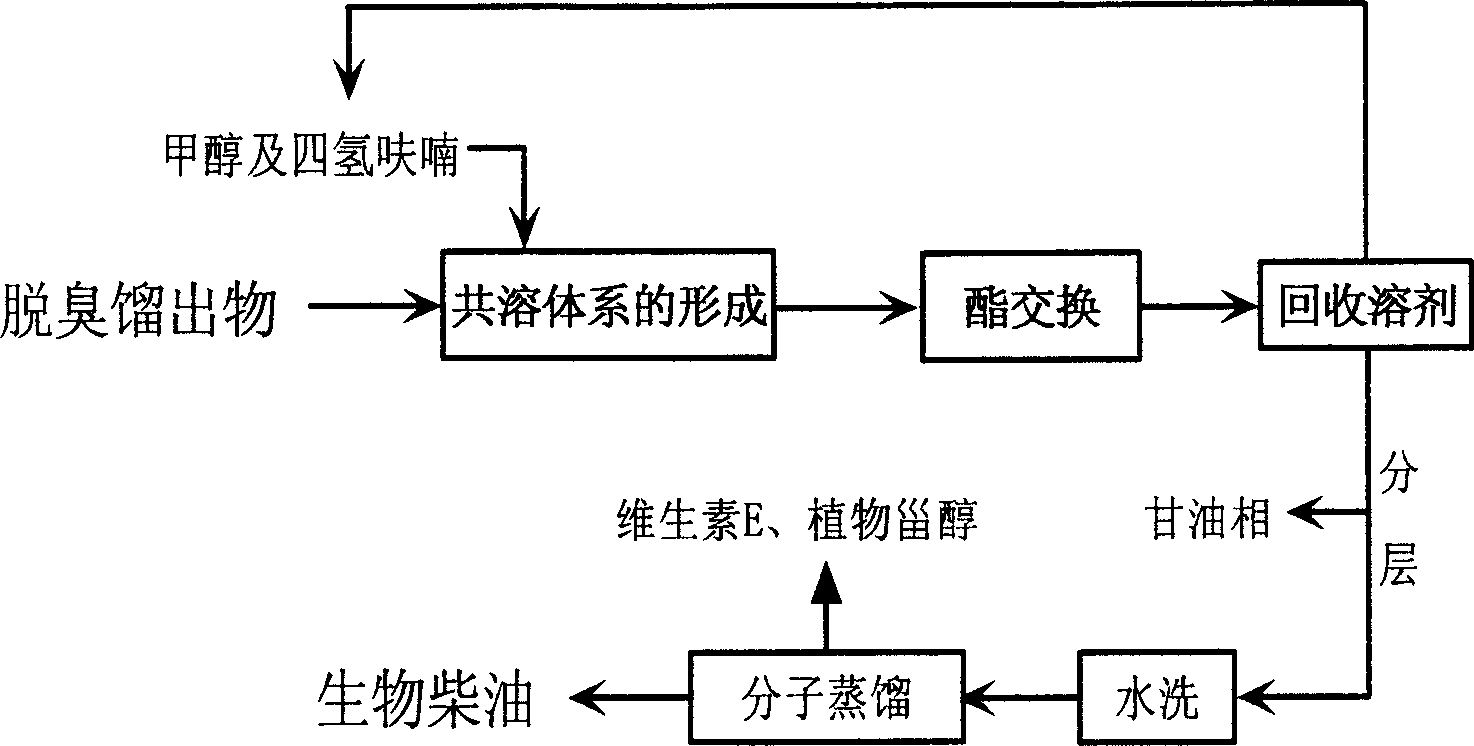Method for producing biological diesel oil from leftover of edible oil process
A biodiesel and scrap technology, applied in the field of oleochemical industry, can solve the problems of harsh acid catalytic reaction conditions, and achieve the effects of controlling urban air pollution, ensuring oil safety, and reducing the amount of methanol
- Summary
- Abstract
- Description
- Claims
- Application Information
AI Technical Summary
Problems solved by technology
Method used
Image
Examples
Embodiment 1
[0029] Embodiment 1: the optimization of transesterification reaction condition
[0030] Investigate respectively the influence of alcohol-oil ratio, catalyst consumption, reaction temperature and reaction time on reaction yield by single factor optimization, see respectively Figure 3-6 .
[0031] Effect of alcohol-oil ratio on reaction yield: by image 3 It can be seen that the reaction yield reaches the optimum value when the alcohol-oil ratio reaches 21:1, and further increasing the alcohol-oil ratio has little effect on the reaction yield. According to the regression curve y=-0.021X 2 +1.3885X+11.401 (y is the amount of tetrahydrofuran (THF) added, X is the ratio of alcohol to oil), it can be seen that the amount of THF added is about 31% when the ratio of alcohol to oil reaches 21:1, and the amount of methanol added in the co-solvent system is about 31%. The volume ratio of the volume of solvent added to the system to the volume of edible oil offal is about 1.8:1. In...
Embodiment 2
[0050] Embodiment 2: Analysis of biodiesel physicochemical properties
[0051] Because the produced biodiesel will be used as an alternative fuel for diesel engine combustion, so in order to ensure that the biodiesel has good combustion performance, the physical properties of the product were analyzed according to the E DIN 51606 quality standard formulated by Germany.
[0052] main indicators
Standard Test Method
scope
detection value
iodine value
Acid value (mgKOH / g)
Monoglyceride (W%)
Diglycerides (W%)
Triglycerides (W%)
Moisture content (mg / kg)
DIN53241-1
DIN 51558-1
E DIN 51609
E DIN 51609
E DIN 51609
DIN 51773
DIN 51777-1
<115
<0.5
<0.8
<0.4
<0.4
>49
<300
105.7
0.087
0.39
0
0
53.4
132
[0053] The cetane number in the product can reflect the combustion performance of biodiesel. The cetane number of b...
PUM
 Login to View More
Login to View More Abstract
Description
Claims
Application Information
 Login to View More
Login to View More - R&D Engineer
- R&D Manager
- IP Professional
- Industry Leading Data Capabilities
- Powerful AI technology
- Patent DNA Extraction
Browse by: Latest US Patents, China's latest patents, Technical Efficacy Thesaurus, Application Domain, Technology Topic, Popular Technical Reports.
© 2024 PatSnap. All rights reserved.Legal|Privacy policy|Modern Slavery Act Transparency Statement|Sitemap|About US| Contact US: help@patsnap.com










